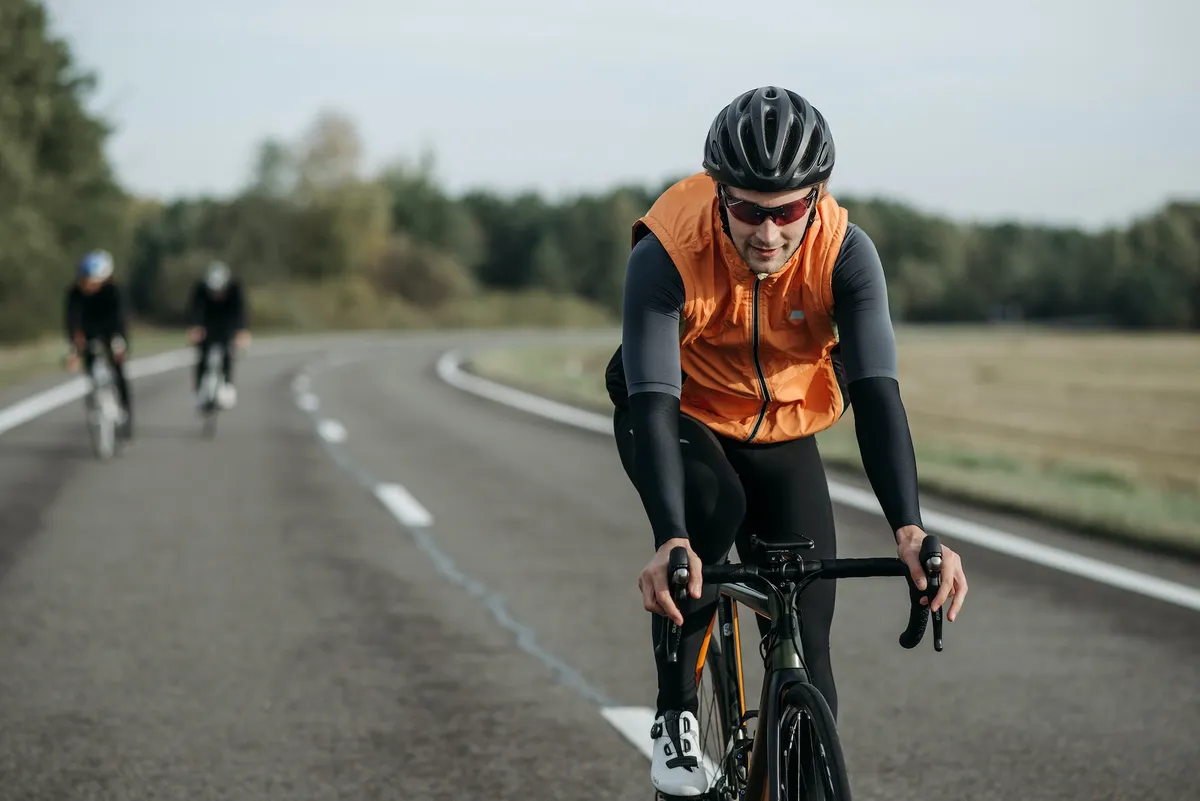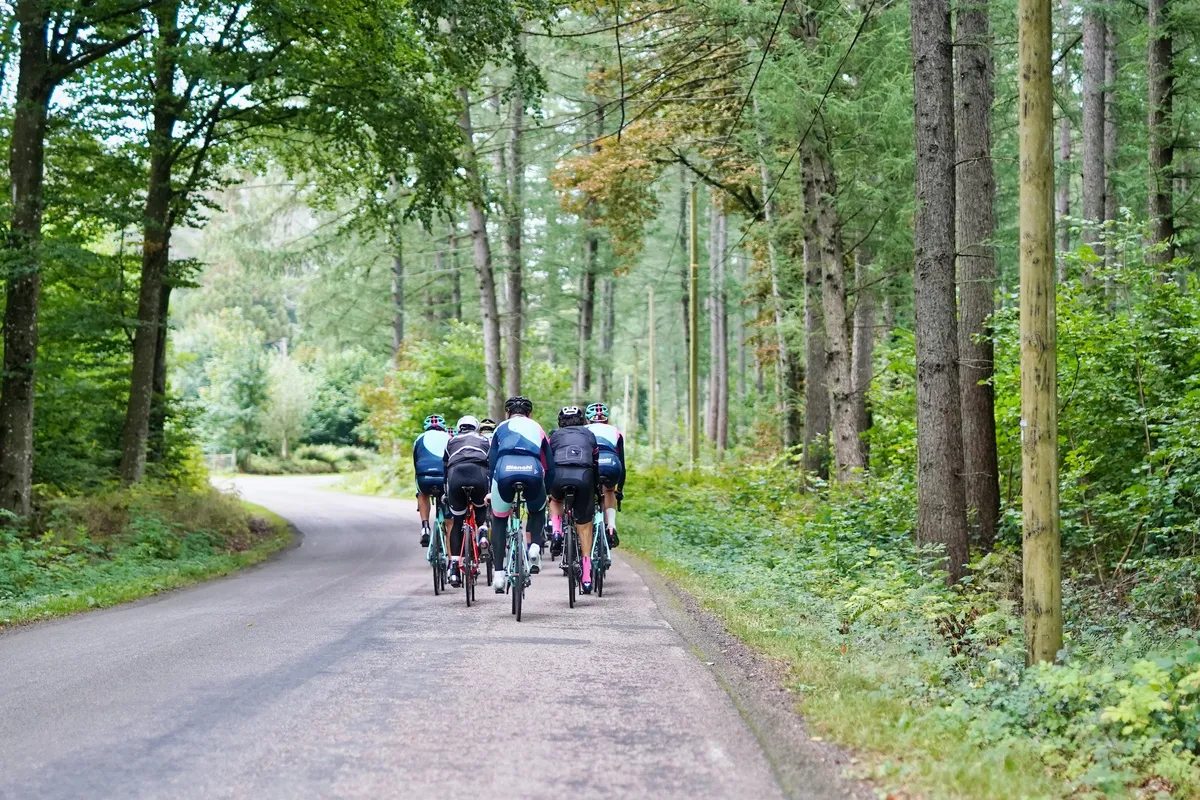In a couple of our recent articles, we discussed how much swimming and how much running you should do as a triathlete. Now, it’s time for coach Philip Hatzis to answer the question of how much cycling triathletes should do.
When exploring the question from a swimming and running perspective, we looked at the minimum required dose to achieve the desired effect. In cycling, this is no different, especially for time-pressed people. However, we can be a little ‘looser’ with the rules around doing too much or not.
As cycling is a non-load bearing closed system (in theory, you are screwed in or immovable at all touchpoints to the bike), it has a much lower injury risk. Therefore, as long as the bike fits you, you can afford to do what may be described as ‘too much’ every now and then, as long as you recover around it.
How much cycling should a triathlete actually do?

Given that statement, which is very counterintuitive to anyone if they have read the other two articles for running and swimming, the following guidelines are helpful to estimate what your longest rides need to be depending on your triathlon distance:
- Sprint or less: 1-2 hours
- Standard distance: 2-3 hours
- Middle distance: 3-5 hours
- Long course: 6-8 hours
There are two critical observations. Firstly, there are ranges for each of the race distances for athletes. Secondly, these aren’t absolute periods, rather suggestions or guides.
If you’re a sprint-distance athlete, you’re unlikely to gain much more after four hours than you would from two (for the race distance you are doing), but it doesn't mean you can't do four hours on the bike…or further! Just that those other two hours could be better spent in other disciplines or recovering.
A simple way of looking at constructing a week of cycling is to plan three sessions per week. A longer ride and a couple of shorter (1-1:30-hour) interval-style sessions are plenty to build strength.
Ironman athletes may need to think about a fourth ride a week as there are benefits to being bike fit, and an increased volume does help, but that’s a ‘nice to have’. This can be intervals or another longer ride depending on your available time.
Tailor sessions to your distance
If the answer to "how much cycling should I do" is so simple, why do we need to talk about it further? Here’s where many age groupers get it so wrong and can make some significant gains in the limited time that they have.
Each of the triathlon distances have very different athlete profiles (middle distance and standard distances require a similar physiological effort). This means, when training, you need to consider what you’re trying to train to do.
An Ironman athlete needs to hold a sub-threshold, steady-state aerobic effort for about a quarter of a day. Whereas a sprint-distance draft-legal athlete needs to be able to hit the maximum power numbers out of corners and dig deep on the front, and then recover before their next turn for a handful of minutes.
It’s a totally different racing effect you need to train for. Yet, we often see athlete training programmes focusing on the same training style with a group ride at the weekend.
Make the long ride work for you

Though the efforts won't change too much (there is only so much time you can spend at VO2Max before you fade), the longer rides are where most athletes go wrong. Suppose you take the shorter interval-style session focussed on fundamental physiological changes. In that case, you can tweak them through the season to match your training development aims depending on your race distance.
You need to think more carefully about making the long ride appropriate. After all, that sprint-distance athlete won't do two hours of chasing and working as a group. At non-drafting events, we want athletes to work as smoothly as possible to keep the effort consistent.
Still, it’s unusual to find a group ride advertised as ‘steady’ that doesn't have some effort or interval-style outcome; for example, when someone goes hard up a hill or a lovely stretch of road. No one wants to be dropped, so they all work hard until there is almost a full-on race to stay together, and no one wants to be the person to blink!
Indoor riding has helped this a little when athletes try and follow the session, but it’s still a problem – just sign up to any advertised steady ride or sportive and people will still surge, so a steady ride isn’t always so steady.
Use your time smartly
Finally, given the stigma of being a triathlete on a bike, you should also consider how much riding you need to do to help improve your handling skills. All too often, triathletes focus on power, duration and speed.
However, if you can't actually ride a bike, more time needs to be spent riding than doing intervals or anything else, as otherwise you won't have the bike split you deserve. This may mean that you should consider adding an extra session through the week that deliberately focuses on skills rather than speed.
In cycling, you really can get away with a bit more than the other two sports. Nonetheless, be smart about how you use that time. Very few triathletes have an abundance of free time in their life, so make sure the time you do have is spent effectively. Unfortunately, on the bike it’s all too easy to get carried away and do junk miles when you still can’t ride around a corner!
